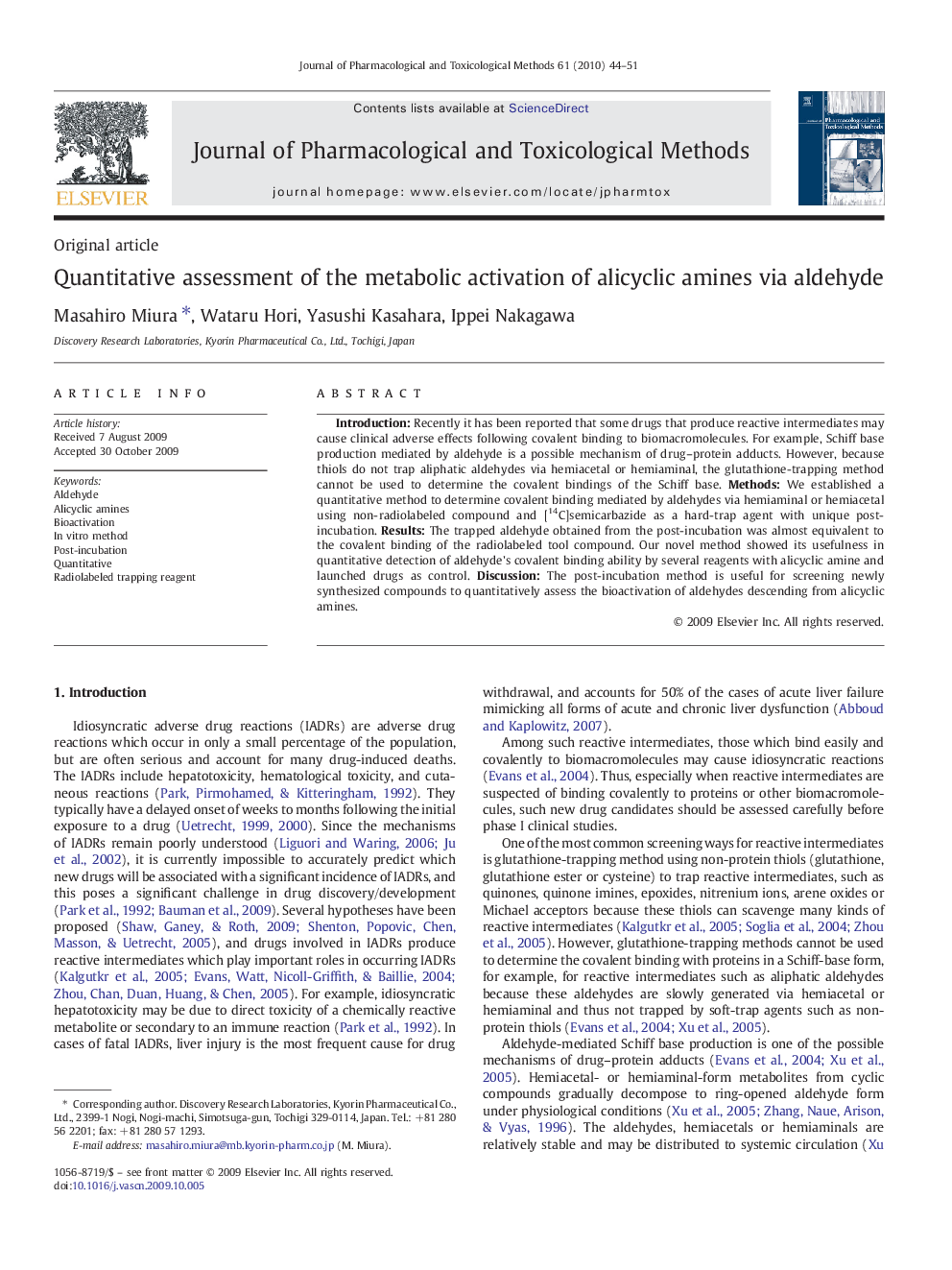| Article ID | Journal | Published Year | Pages | File Type |
|---|---|---|---|---|
| 2549411 | Journal of Pharmacological and Toxicological Methods | 2010 | 8 Pages |
IntroductionRecently it has been reported that some drugs that produce reactive intermediates may cause clinical adverse effects following covalent binding to biomacromolecules. For example, Schiff base production mediated by aldehyde is a possible mechanism of drug–protein adducts. However, because thiols do not trap aliphatic aldehydes via hemiacetal or hemiaminal, the glutathione-trapping method cannot be used to determine the covalent bindings of the Schiff base.MethodsWe established a quantitative method to determine covalent binding mediated by aldehydes via hemiaminal or hemiacetal using non-radiolabeled compound and [14C]semicarbazide as a hard-trap agent with unique post-incubation.ResultsThe trapped aldehyde obtained from the post-incubation was almost equivalent to the covalent binding of the radiolabeled tool compound. Our novel method showed its usefulness in quantitative detection of aldehyde's covalent binding ability by several reagents with alicyclic amine and launched drugs as control.DiscussionThe post-incubation method is useful for screening newly synthesized compounds to quantitatively assess the bioactivation of aldehydes descending from alicyclic amines.
